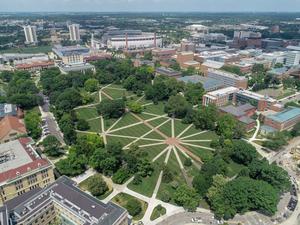
Ohio State University punches well above its weight in leading indicators of technology commercialization, such as startups formed and inventions starting the process each year, but it still generates licensing revenue well below the median for a research institution of its size, according to the latest survey by the trade group AUTM.
The university's $5.7 million in fiscal 2020 revenue from licensing deals and spinoffs based on faculty, staff and student discoveries was less than half the median of $14 million among 57 universities and hospitals with more than $470 million in annual research spending. But it had nearly 400 new invention disclosures, which starts the commercialization process, nearly 400 applications for patents and 12 startups formed, all above medians.
Ohio State remains in the middle of the pack for income among Big Ten schools. Revenue for the year ended June 30, 2020, was down by one-third from 2019's record $8.9 million, as I previously reported, because of the one-time payout from a spinoff acquisition in the prior year.
Indiana and Purdue universities had the widest year-over-year gains in income.
OSU has renewed emphasis on ensuring its research turns into products and services impacting real life. It's building a more than $1 billion Innovation District on west campus, hosting partners such as Nationwide Children's Hospital, the state's tech commercialization leader.
Nationwide, research institutes including universities and hospitals executed more than 10,000 licenses and options, launched 933 products and formed 1,117 spinoffs, according the AUTM report. The 2019 results were delayed until this spring because of the coronavirus pandemic, but AUTM returned to the usual November release date for 2020 figures.
"With the outbreak of the health crisis, the work of technology transfer offices quickly moved to the battle’s front line," AUTM Chairwoman Laura Savatski wrote in the report. "Leading science and research-based organizations led the creation of licensing guidelines that would ensure rapid and broad access for all humankind to the life-saving technologies."
Overall year-over-year comparisons were difficult, the trade group said, because a few dozen institutions did not respond to last year's survey.
University of Illinois has the highest adjusted income in the Big Ten, with most of its total coming from the school's Chicago campus, according to annual reports. Advanced materials, such as flexible semiconductors, and cell-based immune therapies are listed as the university's top income generators.
University of Wisconsin has separate survey responses for Madison and Milwaukee; it's not clear if other schools include multiple campuses in their results.
Northwestern University had gross income of $105 million in 2020, but passes through royalties from its drug Lyrica to Pfizer, which bought the rights for an up-front sum.
Licensing income at Ohio State was stuck at or below $2 million from 1991 through 2014 before climbing, according to historical AUTM data.






